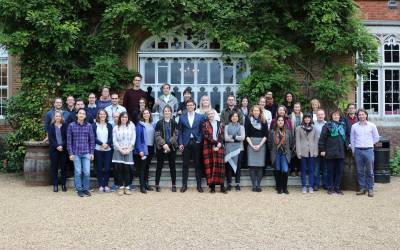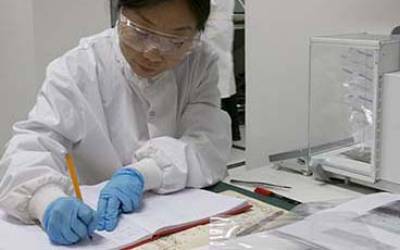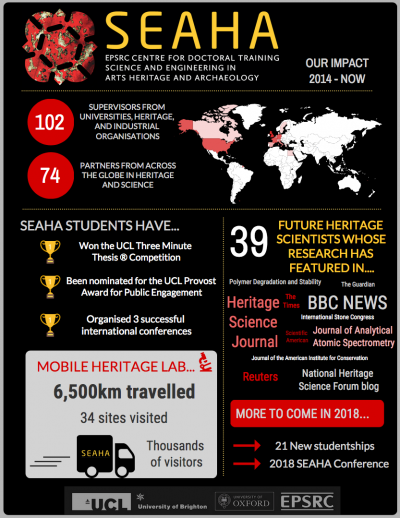About
SEAHA is a Centre for Doctoral Training (CDT) funded by the Engineering and Physical Sciences Research Council (EPSRC) from 2014-2022. We provide fully-funded four-year integrated MRes and PhD studentships in heritage science to eligible students. Students who study in the CDT come from diverse disciplinary backgrounds, from archaeology to chemistry, mathematics and engineering.
SEAHA began as a response to the need to train interdisciplinary scientists and engineers in cultural heritage and was co-developed with a number of partner institutions from the industrial, heritage, scientific, engineering, and higher education sectors. We are now a leading voice within the field, and are producing innovative and pioneering research.
Please note that the SEAHA CDT is no longer recruiting students.


The Programme
SEAHA students undertake the SEAHA MRes programme first at UCL. The programme introduces students to a unique assembly of scientific disciplines — physical sciences, engineering, imaging, computing, social sciences — brought together in order to address research questions relating to cultural heritage.
After the MRes at UCL, our students undertake their PhD at one of our University partners UCL, University of Oxford or University of Brighton. Each studentship is a unique project, designed in collaboration with contributing heritage and industry partners. Our projects align with a training stream: material, environmental, or digital. Together these three streams encapsulate the framework of skills development and are illustrative of the diversity of projects in the CDT
As a Centre for Doctoral Training SEAHA also offers students additional training and cohort activities alongside their studies.
The Universities
SEAHA is a consortium of three UK universities, University College London, University of Oxford and University of Brighton, which together with our partners deliver the cross-disciplinary expertise necessary for heritage science research.
- University College London
University College London is home to the Institute for Sustainable Heritage where all SEAHA students are based for the SEAHA MRes year. The Institute for Sustainable Heritage is world leading in heritage science and has particular expertise on (1) heritage imaging (with an unparalleled hyperspectral imaging system) (2) material conservation with a particular focus on plastics and paper, and (3) preventive conservation. SEAHA students have access to two dedicated heritage science laboratories at Gordon House in Bloomsbury and Here East in addition to the SEAHA Mobile Heritage Lab.
SEAHA UCL PhD students are based either at the Institute for Sustainable Heritage or across different departments at UCL including Civil, Environmental and Geomatic Engineering, Archaeology, Medical Physics.
- University of Oxford
The University of Oxford is home to the School of Geography and the Environment (SoGE), which hosts all Oxford-based SEAHA students when they are in the 2nd to 4th years of their projects. SoGE has recently been ranked the top geography department in the world for the 9th year running on the QS rankings, and is a large and vibrant department. SEAHA students have access to SoGE’s Geolabs (offering a range of experimental facilities, non-destructive testing equipment, and analytical facilities including ICP-MS, Dionex ion chromatography), as well as to the OldLab (which is a world-leading optically-stimulated luminescence, or OSL, laboratory). SEAHA students also have access to SoGE’s field experimental site at Wytham Woods, with a range of test walls. SEAHA students in Oxford also work collaboratively with researchers in the Bodleian Library and Ashmolean Museum, as well as using facilities within the Earth Sciences and Archaeology departments.
- University of Brighton
The University of Brighton has an international track record in interdisciplinary digital heritage science, embedded in a rich research environment framed in terms of five Brighton Futures themes and fourteen Centres of Research Excellence. The SEAHA programme operates across the disciplines of Computing, Environmental Science and Media and is supported by the Centre for Secure, Intelligent and Usable Systems, the Centre for Digital Media Cultures, and the Brighton Doctoral College. SEAHA students have access to a wide range of research facilities including 3d scanning, modelling and fabrication technologies, advanced geochemical analysis, high resolution imaging and analysis, drone technologies for remote sensing, surveying, imaging and media production, built environment analysis and management, and digital media and data management. Our local, national and international heritage and research links, such as the Brighton Royal Pavilion and Museums, South Downs National Park, the Natural History Museum, the V&A, the Smithsonian Museum Conservation Institute, Historic England and the National Trust, provide an engaged and stimulating environment for students to undertake a blend of academic, heritage and industry-relevant doctoral research.
Our impact
In 2018 we looked back at our impact over the first four years of SEAHA. During this period the centre grew significantly, as we welcomed both new students and supervisors. Our students' research also featured in both peer reviewed journals, and multiple projects have been picked up by news outlets such as the BBC.

 Close
Close

